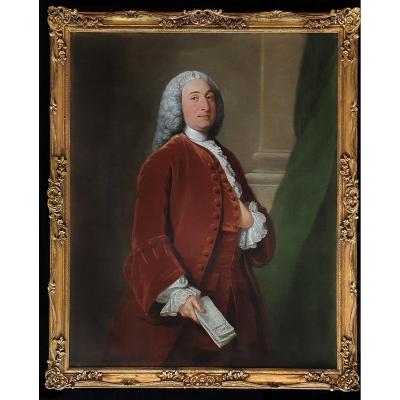William Hoare of Bath R.A. (c.1707–1792)
This large-scale work formed part of a collection of family pictures and heirlooms of the Pelham family (Duke of Newcastle and later Earls of Chichester) at Stanmer House for around 200 years (see image of the painting in the dining room during 1932). The sitter in this portrait descended from one of the best and most ancient families in England and the family had been seated in the county for more than 600 years. Painted by the Duke’s favourite artist, William Hoare, it is a fine and sensitive example of Hoare’s work.
This striking portrait is the highest calibre and an excellent example of the English 18th century portrait. The sitter is portrayed in a standard gentlemanly pose for the period with one arm tucked into his jacket. It is striking in its study of the sitter’s attitude and in the graceful and natural manner of certain elements. Lace was also an important accessory for men in the 18th century; here it is worn around the cuffs of the shirt and down its front opening, known as a ‘bosom ruffle’. The lively handling of the cuffs, which have been painted in a free and florid style, and the treatment throughout the coat are exquisite.
The sitter in this portrait is Thomas Pelham-Holles, 1st Duke of Newcastle upon Tyne and 1st Duke of Newcastle-under-Lyme, KG, PC, FRS (1693-1768). This fact is made certain by an article written about Stanmer house and its contents in Country Homes and Gardens (published 2nd January 1932). The article contains a photo of the dining room and it identifies the sitter of our portrait: “Newcastle himself appear on the left of the illustration, in the corner by the door, and next to him is his brother, Henry Pelham, Prime Minister and Chancellor of the Exchequer from 1743 to 1754. Both these portraits are by Hoare of Bath”.
The fact that this portrait was placed in such an important and prominent room within the house, the dining room, is testament to the sitter’s importance within the family. This room contained the richest decorative treatment exhibiting the full stateliness of the Palladium manner and it showcased members of the family during the 18th century.
Thomas held power with his brother, Prime Minister Henry Pelham, and the two men formed a formidable political partnership and together dominated British politics until Henry's death in 1754. He was the son of Thomas, first Lord Pelham, through whom he gained an entree into the world of aristocratic politics. His uncle, John Holles, Duke of Newcastle, bequeathed to him his substantial fortune and thus a day before Thomas’ eighteenth birthday he inherited the bulk of one of the largest estates in England on the condition that he adopt the name of Holles. Before he was nineteen, he inherited the vast estate of his father as well. The combined income of the two estates had been estimated at £25,000 to £40,000 a year. Within a year the young lord was in a state of extreme financial embarrassment which lasted until his death. Contemporaries believed that he spent as much as £100,000 during the year following the death of Queen Anne in support of the Hanoverian Dynasty. These expenditures included subsidising the cost to fight mobs that were hostile to the new dynasty, expenses in repelling the Old Pretender in 1715, and costly entertainment for the electors of many boroughs and shires in the general election of 1715. As a reward for these services in 1714 he was made Viscount Houghton and Earl of Clare; and in 1715, Marquess of Clare and Duke of Newcastle-on-Tyne. From then on, he was Holles Newcastle. The real significance of the year 1714-15, however, is not his rapid rise in the peerage but his financial extravagance, which plunged him into debt and influenced fundamentally both his political career and his relations with his brother Henry.
When his brother-in-law, Charles second Viscount Townshend, married Dorothy Walpole in 1713 he allied himself with Sir Robert Walpole. They would be political partners for the next 20 years, and Newcastle would remain a loyalist until Walpole's fall in 1742. Thomas’ own marriage in 1717 with the daughter of the Earl of Godolphin, and granddaughter of John Churchill Duke of Marlborough, connected him with Charles Spencer, third Earl of Sunderland.
The portrait shows the Duke shortly before he formed his first administration in March 1754 after the death of his brother the Prime Minister Henry Pelham. William Hoare, who was patronised by both brothers, produced several portraits for the family. After Henry's death, the Duke of Newcastle was prime minister six years in two separate periods and the paper that he is holding with the text ‘war accomplish’ is probably a reference to the Seven Years' War, which he precipitated.
Newcastle had no children, but by special remainder the heir to his Dukedom was his nephew Henry Clinton 9th Earl of Lincoln. When his Dukedom had been created in 1715, the title was allowed in the patent to pass to his brother Henry Pelham. In 1756, two years after Pelham’s death, and with no issue from the Duke’s marriage in 1717 Henrietta daughter of the Earl of Godolphin, Newcastle was further created Duke of Newcastle-under-Lyme, with a remainder in this instance to the 9th Earl of Lincoln, the husband and cousin of Henry Pelham’s daughter Catherine. The considerable energy that Newcastle must have put into this inheritance can be imagined from the fact that he was able to persuade George II to create the only non-Royal dukedom of his thirty-three-year reign. Lesser cousins were not overlooked either, and the second of Newcastle’s peerages to be granted in 1756, the Barony of Pelham of Stanmer passed by a different remainder to Thomas Pelham, the Duke’s cousin and heir male, later created in 1801 Earl of Chichester.
Stanmer Hall, lying in a fold of land between Lewes and Brighton, was the third house to become the home of the great Sussex family of Pelham. In 1713 Henry Pelham of Lewes bought the Stanmer Estate for £7,500. In c.1721 he commissioned the Frenchman Nicholas Dubois (c 1665-1735) to build a new house on the site of the earlier manor house in the Palladian style at a cost of £14,000. Henry Pelham died in 1725, and Thomas, his youngest brother, inherited the estate. Work on the house was finally completed in 1727. Thomas Pelham's son, of the same name, inherited the estate in 1737 and would later be elected to the House of Commons for Rye in 1749, a seat he held until 1754. In 1768 Thomas succeeded his cousin the Duke of Newcastle as second Baron Pelham of Stanmer as well as the Pelham baronetcy and in 1801 he was created Earl of Chichester, a title which would maintain Stanmer as its seat for the next 140 years.
William Hoare was a portrait painter in oil and crayons. He was born in Suffolk England in 1707. His father sent him to London in the early 1720’s to study art. He then studied for nine years in Italy and by 1739 had returned to England and settled in Bath where he lived for fifty years. In Bath he was the most successful painter there and he established a very successful practise painting portraits. He was the favourite portraitist of the Duke of Newcastle and his family and painted many portraits, and several versions, of them particularly in 1752. He exhibited 22 paintings at the Royal Academy from 1761 to 1769. He died in Bath at the age of 84 in 1792.
Provenance:
The sitter at Claremont House (purchased in 1714 by Thomas Pelham-Holles, the Duke of Newcastle);
By descent to his cousin and heir Thomas Pelham (later, Earl of Chichester) at Stanmer House, where it remained until mid 20th century;
The collection of Sir William Whitfield CBE, St Helen Hall, County Durham
Measurements:
Height 141cm, Width 115cm framed (Height 55.5”, Width 45.25” framed)





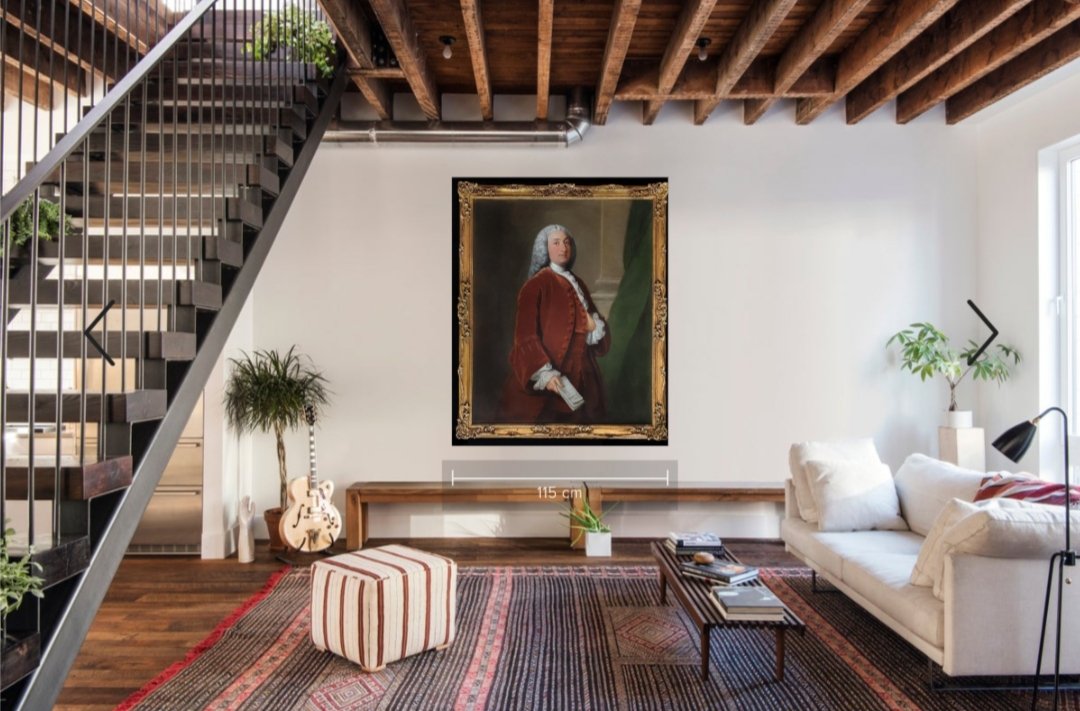
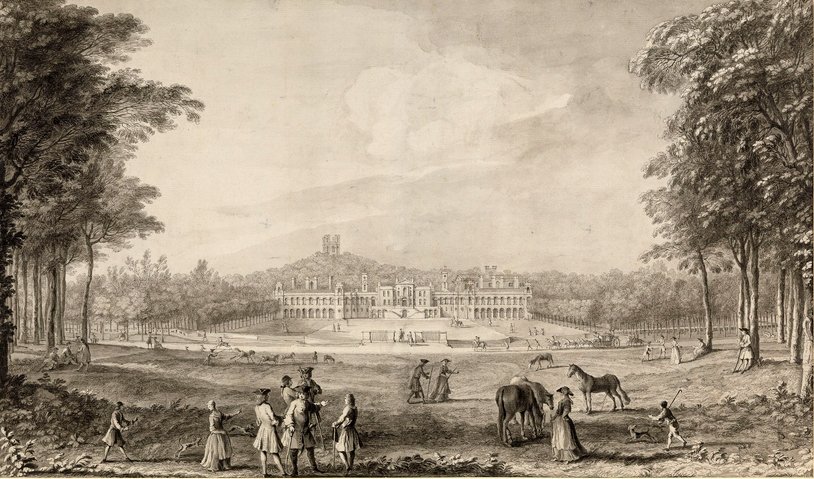



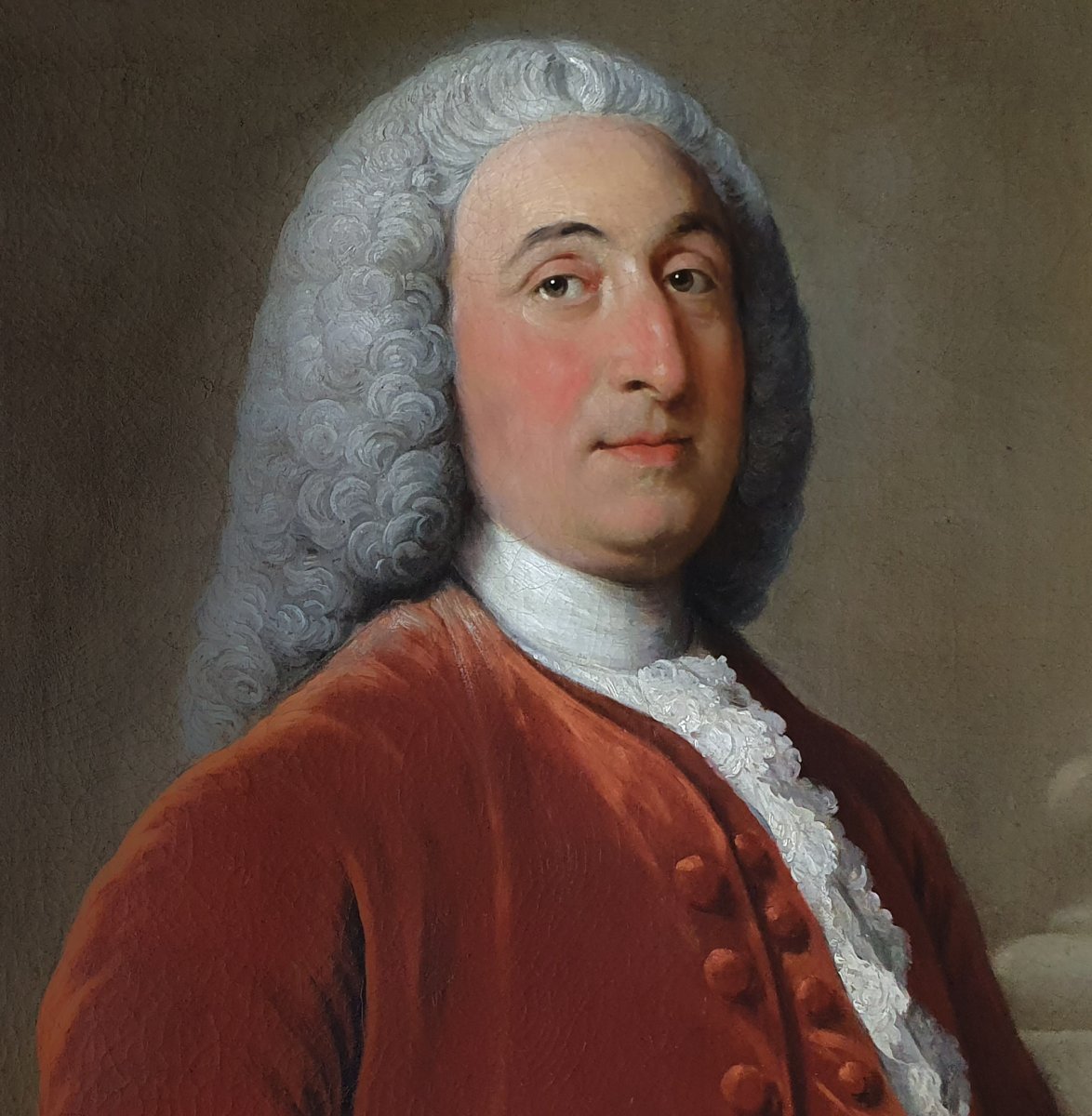
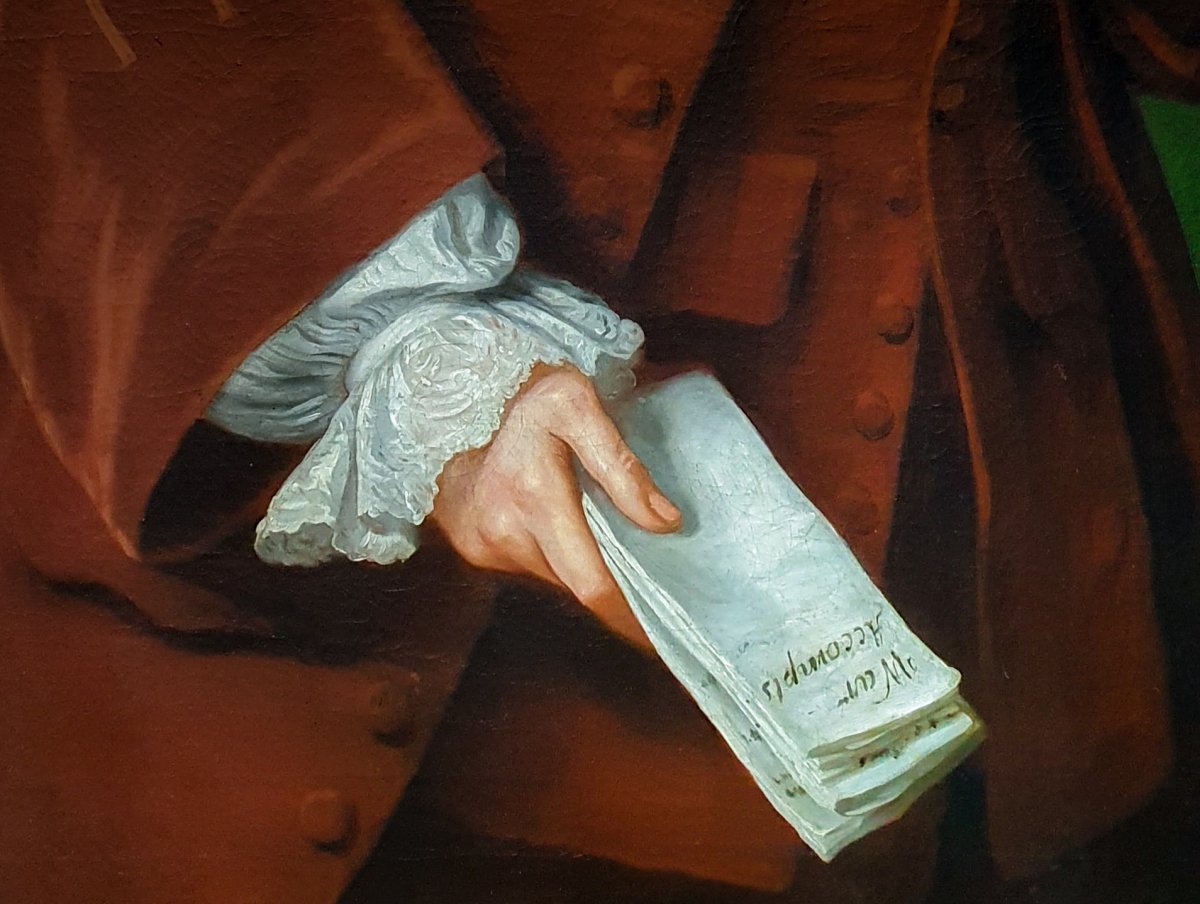










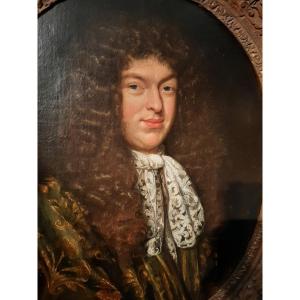
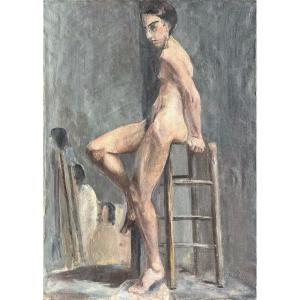
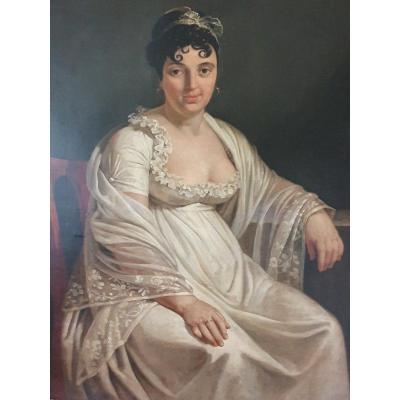



 Le Magazine de PROANTIC
Le Magazine de PROANTIC TRÉSORS Magazine
TRÉSORS Magazine Rivista Artiquariato
Rivista Artiquariato
